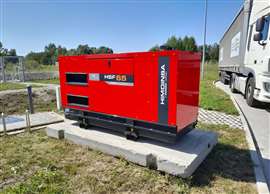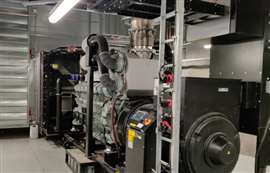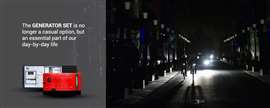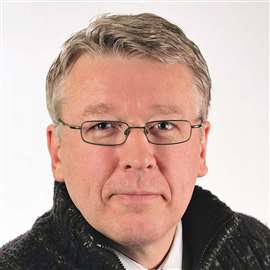Read this article in Français Deutsch Italiano Português Español
Himoinsa: A month after the Iberian Peninsula blackout
30 May 2025
Spanish gen-set manufacturer reports daily requests have tripled.
 (Photo: Himoinsa)
(Photo: Himoinsa)
It’s well known that power outages caused by natural disasters and other events can be good for future gen-set sales. On Monday April 28, a blackout affected 60 million people in Spain and Portugal, leaving the entire Iberian Peninsula without power.
Himoinsa, founded in 1982 and based in Murcia, Spain, supplies power generation equipment in the international market. Its products include generator sets, light towers, and power storage and distribution systems. It has been part of Yanmar Group since 2015.
Since the blackout, the company reported that is has seen a significant increase in demand for generator sets, and that it has seen its products become a more widespread consumer good, reaching beyond critical applications in hospitals or data centers, where they were already popular.
Himoinsa analysed what happened following the blackout and published a white paper that can be found here. What follows below is a recent press release issued by the company that answers, “What happened after the first month since the blackout?”
—Chad Elmore
 (Photo: Himoinsa)
(Photo: Himoinsa)
After the blackout, the generator set is no longer an option, it is a necessity. In a context that many have already categorised as the biggest electricity crisis in Europe’s history, last April’s blackout highlights the need for power systems to help alleviate its consequences. On 28 April, just a few minutes after 12:30 noon, a sudden power outage occurred that left more than 60 million people in Spain and Portugal without electricity, affecting practically all the infrastructures in both countries. At that instant, 15 gigawatts of electricity generation suddenly disappeared: 60% of the electricity being consumed in the whole of Spain.
After the day’s events, the focus was placed on the vulnerability of electrical systems and the need to have adequate backup power sources within our reach. This is something that is already in place in other regions of the world, where natural phenomena such as hurricanes, snowstorms or forest fires cause frequent interruptions in the power supply, seriously affecting continuity in homes, hospitals, educational centers or industrial facilities. In these contexts, the generator set is not a one-off option, but an essential infrastructure, integrated into daily life as a guarantee of energy autonomy.
Immediately after the blackout, Himoinsa analysed what happened in a technical white paper (link above), where its team of experts explained the solutions available, the international regulatory context and the best practices for safely having an electricity supply available in times of main grid failure.
Although the majority of the population was isolated during the blackout, those who had invested in emergency systems and generators were able to avoid the economic losses and the instability of the day without electricity to a greater extent. This fact and the uncertainty that it could happen again, in the context of the current electricity crisis, has led to a generalised demand for generators.
Uninterrupted power: generator sets after blackout
Generating sets allow electricity to be generated autonomously while the main grid is being restored, playing a key role in critical situations. Although it is very common to see them installed as emergency power in sectors such as health care, data centers, public buildings, industrial areas whose activity cannot be interrupted, there is a change of habit, and they are beginning to be considered as a more generalised consumer good in various environments such as education, business and even family and residential environments. Being able to continue with tasks or activities that are indispensable in people’s daily lives highlights the importance of having alternative energy sources and the need for an adaptability strategy for situations that can affect society as a whole.
 (Illustration: Himoinsa)
(Illustration: Himoinsa)
Himoinsa has experienced a significant growth in demand in the last month, mainly in Spain and Portugal. The number of daily requests has almost tripled with a very active demand from both regular customers and new users who had not previously considered the option of having their own generation systems. Among the sectors with the highest demand for energy solutions, the agricultural sector has reacted with urgency. In addition, there has been a significant demand from shops, restaurants and small supermarkets. Also industry, especially in the case of metallurgy, continuous process factories and automated lines.
“These sectors cannot afford unplanned outages, and the blackout has highlighted this vulnerability, said Juan Ignacio Perona, sales director of Himoinsa in Spain, who adds that as a result of an increase in requests, sales have increased. “In just one week after the outage, sales in Spain have increased by more than 100%. We are aware that this is a peak moment and that it is still too early to anticipate whether this trend will consolidate, but all indications are that there will be a knock-on effect in the coming months due to the awareness generated.”
The diversification in the applications of generating sets is in response to this energy adaptation strategy. Before the blackout, most citizens may not have had any doubts about the fragility of electricity infrastructures. Phenomena such as the one that occurred have represented a turning point from which the guarantee of electricity supply has become a key element in critical installations and also for private use.
 (Photo: Himoinsa)
(Photo: Himoinsa)
Guaranteed backup: Himoinsa operated non-stop during the electricity crisis
From minute zero, Himoinsa coordinated all the actions carried out by its technical team to effectively provide solutions that would allow activity to continue in critical locations. During the blackout and the hours that followed, Himoinsa’s teams worked to activate various priority action fronts:
- After-sales service: Reinforcing on-site technical assistance at critical facilities. Most of the incidents detected were resolved quickly, and were mainly related to installation defects.
- Support to its sales and rental network: Immediacy in the supply of generator sets, both to commercial distributors and rental companies with which Himoinsa operates, guaranteeing energy support.
- In order to optimise response times by coordinating the resources available in different locations, Himoinsa activated an internal monitoring and communication protocol. This immediate mobilisation was decisive in ensuring that the solutions reached where they were most needed.
Himoinsa is already seeing a change in trends, with the demand for back-up energy solutions for single-family homes and rural areas.
According to Juan Ignacio Perona, “we are not yet talking about large volumes, but we are talking about a more general user profile that is starting to find out about and compare options. Undoubtedly, this could be a turning point towards a more generalised demand in this segment.”
The immediate response provided by generator sets and their ability to work as an autonomous energy source ensures the continuity of installations and also guarantees basic services in general for any end-user.
POWER SOURCING GUIDE
The trusted reference and buyer’s guide for 83 years
The original “desktop search engine,” guiding nearly 10,000 users in more than 90 countries it is the primary reference for specifications and details on all the components that go into engine systems.
Visit Now
STAY CONNECTED




Receive the information you need when you need it through our world-leading magazines, newsletters and daily briefings.
CONNECT WITH THE TEAM













